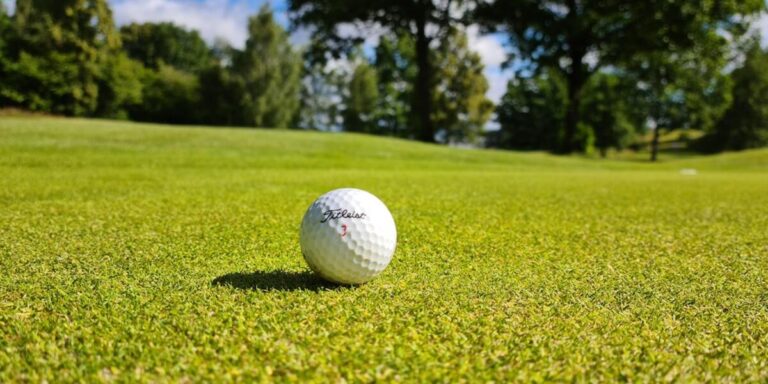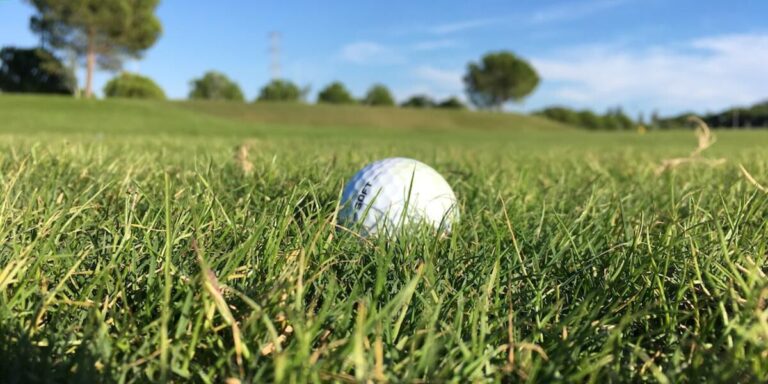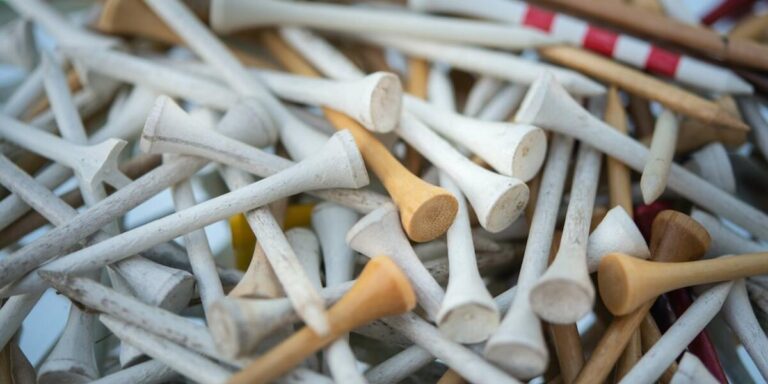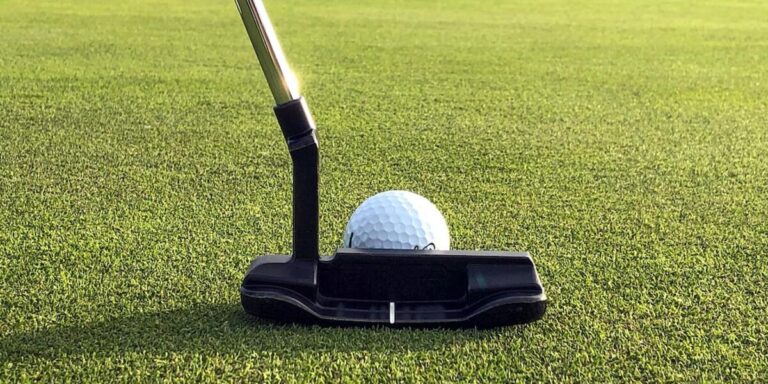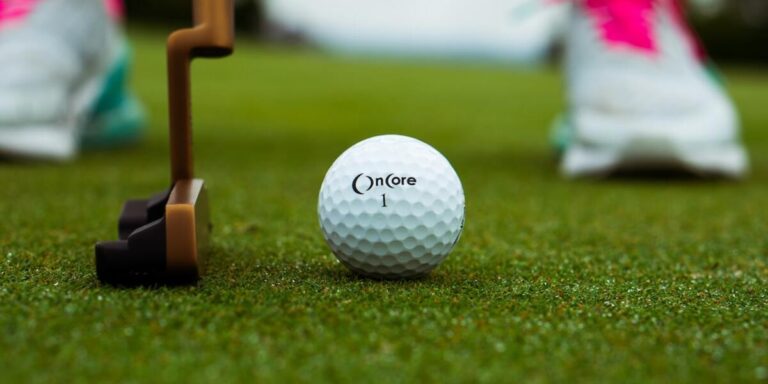Why do golf balls have numbers on them?
If you’ve ever wondered why golf balls have numbers on them, you’re not alone. Even avid golfers may not know the answer to this question. The truth is, there are several reasons why golf balls have numbers, and it all has to do with performance.
Have you ever noticed that some golfers use different colored balls? While there’s no rule against it, most professional tournaments require players to use a white ball. That’s because white contrast well against green grass, making it easier for spectators to follow the ball’s flight path. So what does color have to do with numbering? Well, back in the day when almost all golf balls were white, it was easy to tell which ball was yours if it had markings or initials on it. But as more companies began producing colorful balls – think pink and orange – marking each one became less practical. Thus, the need for an identification system arose and manufacturers started stamping serial numbers on their products
The History of Golf Balls and Their Numbers
Golf balls have come a long way since their inception in the 15th century. The game of golf has evolved and so have the golf balls used to play it. Early golf balls were made of leather and stuffed with feathers, making them very difficult to control. In 1848, gutta-percha was introduced as a material for ball construction and this made vast improvements to both accuracy and distance. It wasn’t until 1898 that the modern day golf ball we know today was invented by Coburn Harman. This new design had dimples on its surface which helped reduce drag and improve flight performance.
The number of dimples on a typical golf ball can range anywhere from 336 to 500! That’s quite a lot of dimples considering the size of most golf balls. So why so many dimples? Dimples help to create turbulence around the moving object (in this case, a golf ball). This turbulence helps reduce drag force, which then allows the object to travel further through the air before resistance slows it down. Interestingly enough, not all dimples are created equal! The depth, diameter and location of each dimple can affect how well it performs in reducing drag force.
It’s amazing to think about how such a small change (adding dimples) can make such a big difference in terms of distance and performance. Golfers are always looking for ways to eke out every last yard possible…and those littledimpled spheres they tee up definitely play their part!
How Many Dimples Are on a Golf Ball?
Have you ever wondered how many dimples are on a golf ball? It turns out that the answer isn’t as simple as you might think.
The number of dimples on a golf ball can vary depending on the manufacturer, but most commonly, there are between 336 and 500 dimples on a golf ball. That said, some manufacturers have been known to produce balls with as few as 300 dimples or as many as 1,000dimples.
So why so many different numbers? Well, it turns out that the optimal number of dimples for a golf ball is still something of a mystery. Different manufacturers experiment with different numbers in order to find what works best for their products. And while there’s no definitive answer, it’s safe to say that more dimples usually results in better performance for the golfer.
Why Do golf Balls Have Numbers?
Have you ever wondered why golf balls have numbers on them? The answer may surprise you.
It turns out that the dimples on a golf ball are actually there for a reason. The dimples help to create lift and spin, which in turn helps the ball to travel further through the air.
So how many dimples does a typical golf ball have? It can vary depending on the manufacturer, but most golf balls have between 300 and 500 dimples.
What the Numbers Mean on a Golf Ball
1. Golf balls have a lot of numbers on them, but what do they all mean? Thedimples on a golf ball are one of the most important features, and they aremeasured in terms of depth and number.
2. On average, there are 336 dimpleson a golf ball. This number can vary slightly depending on the manufacturerand the type of ball being used. Dimples help to reduce drag and giverotation to the ball as it flies through the air.
3. When choosing agolf ball, it is important to consider how many dimples you need for yourgameplay style. If you want more control over your shots, choose aball with fewer dimples. If you are looking for more distance, go for awith more dimples.”
Where Do the Numbers Come From On a Golf Ball?
Where do the numbers come from on a golf ball? It’s a question that has puzzled many amateur and professional golfers alike. The answer, it turns out, is quite simple.
On any given golf ball, there are three main elements: the dimples, the core and the cover. Dimples are small indentations on the surface of the ball which help to create lift and spin when hit by a club. The core is typically made of rubber or plastic and provides most of the weight and bounce of the ball. The cover is generally made of either ionomer or urethane and helps to protect the dimples and Core from wear and tear.
So how does this all relate to numbers? Well, each element plays a role in determining how far and accurate your shots will be. For instance,dimple patterns can vary greatly from one manufacturer to another – with some balls having as few as 300 dimples while others have up 2,000! And depending on what material your ball’s cover is made out of (urethane vs ionomer), it can also affect things like spin rate and durability.”
Different Numbering Systems For Golf Balls
There are a few different ways that golf balls can be numbered. The most common method is the numbering system used by the United States Golf Association (USGA). In this system, each golf ball has a number between 1 and 99 stamped on it. The numbers have no particular meaning, but they help to identify each ball if it gets lost or mixed up with others.
Another popular numbering system is the Pinnacle Gold System. In this system, each ball is given a unique serial number which can be used to track its performance over time. This information can be very useful for serious players who want to improve their game.
Finally, there is the Titleist Pro V1 Numbering System. This system also uses numbers to identify each ball, but the numbers have specific meaning in this case. The first number indicates how many dimples are on the surface of the ball, while the second number tells you how hard or soft the core of the ball is
Decoding the Meaning Behind theNumbers
Do you know how many dimples are on a golf ball? According to the United States Golf Association, the answer is between 336 and 426. But what do those numbers mean?
Dimples on a golf ball help reduce drag and increase lift. The deeper the dimple, the more air turbulence it creates around the ball. This turbulence helps keep the ball in flight for longer periods of time. It also makes the ball spin faster, which can improve your accuracy.
So why aren’t all golf balls covered in dimples? Dimples actually cause a small amount of energy loss as they create friction against the air molecules. Too many dimples can make a golf ball too aerodynamic, making it harder to control. That’s why finding the perfect balance ofdimples is essential to designing a quality golf ball
Frequently Asked Question
-
Which ball is longer Pro v1x or TP5X?
-
Can dogs play with golf balls?
-
How many dimples are on a golf ball average?
-
Are golf ball dimples regulated?
-
Who invented golf ball dimples?
-
Why do golf balls have rubber bands?
-
How many dimples does a Titleist have?
-
Why do golf balls have numbers on them?
-
Why do golf balls have dimples and on average how many dimples are there?
-
Are there different size golf balls?
-
Why do dimpled golf balls fly farther?
-
Do all golf balls have the same number of dimples?
The TP5X will optimize spin for players who have trouble spinning their ball. It also provides more control and distance. My driver found that the TP5X was approximately 4 yards longer than the TP5X and the ProV1 averaged 6 yards longer.
Golf balls pose a danger to dogs regardless of their size. For larger dogs, golf balls can be choking hazards. Your dog can also be hurt by golf balls that contain harmful materials. Additionally, broken pieces could cause damage to the stomach or intestinal linings, and fiberglass can also damage your teeth.
Most golf balls have between 300-500 dimples. The 2017/18 Model of the Popular Titleist Pro V1 is characterized by 352 dimples, Titleist’s flagship ball, the Pro V1x has only 328.
The USGA and R&A regulate golf balls. The USGA and R&A regulate golf balls to ensure professional players have equal opportunities. There are not any official rules that regulate the amount of dimples on golf balls. Golf equipment makers are responsible for this characteristic.
Coburn Haskell invented the rubber-cored, one-piece golf ball with gutta percha shell. In 1905, William Taylor created the modern golf club by applying the dimple pattern on a Haskell ball.
New materials such as silicone and polymers are used in modern golf balls to improve aerodynamics, distance, and spin rates.
The company creates between 40-160 dimple patterns each year. New Pro V1 models have 388 and 348 dimples respectively. This marks the first change in dimple count since 2011. However, dimple patterns are more than just the amount of them.
Manufacturers put numbers on their golf balls to make it easier for golfers to identify the ball when they are on the course. Two or more golfers in a team may use the same brand of ball. 69 professional golfers who are in the Top 100 on the PGA Tour use a Titleist Pro V1 and Pro V1x Titleist Pro V1.
Dimpled golf balls can go twice the distance of a straight golf ball. Golf ball manufacturers add dimples on their balls to reduce drag forces, which pull the ball back or slow the ball down.
Today’s standard-sized golf balls are only legal for tournament play. They can also be sold in shops. Today’s standard golf ball size is 1.68 inches. However, before the nineteen-eighties, it was 1.62 inches.
Dimples help to create a turbulent layer of air around the ball during flight. This gives it more lift. The ball wouldn’t travel as parabolic, and would hit the ground earlier (rather than coming down straight).
The average dimple depth is 0.010 inches. Most golf balls are made with between 300-500 dimples. Dimple depth is very important as it affects the lift and drag forces of the golf ball. A change in depth by 0.001 inches can have a dramatic effect on the ball’s trajectory, and its ability to fly a great distance.
Conclusion
If you’re wondering why golf balls have numbers on them, the answer is simple: to help golfers keep track of how many dimples are on each ball. Most golf balls have between 300 and 500 dimples, so it’s important to be able to tell them apart. There are a few other reasons why some golf balls have numbers on them, but the main one is to help golfers keep track of their dimples. So next time you see a ball with a number on it, don’t worry – it’s just there to help you out!


